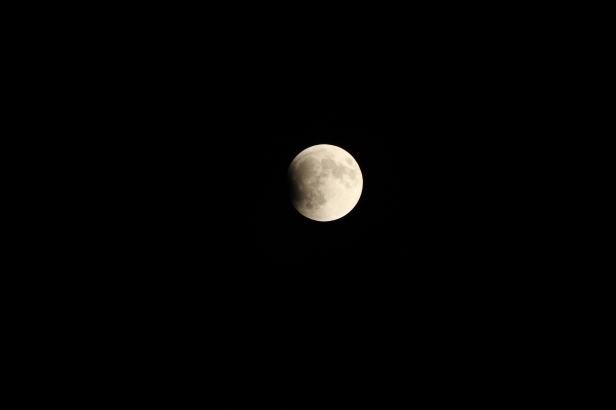
Sunday night, September 27-28, astronomers or those who are inspired to simply “look up” and are located in the eastern half of North America, all of South America, western Europe including Spain, France, Ireland, the UK and West Africa will have the opportunity to observe a very rare spectacle; they will be witness to a Super “BloodMoon”! Sounds eerily like a scene from a modern Frankenstein drama, right? Well, no; what they will observe is the confluence of two separate phenomena: the moon at its perigee, its closest approach to the earth during its 29.5 day orbit and it being at its “Full Moon” phase, the only phase when a lunar eclipse can occur. Since the moon is a bit closer to the earth at its perigee it will appear slightly larger in our sky, hence the term “Supermoon”. In that this is September’s full moon, the full moon immediately following the Autumnal Equinox, it is also known as the Harvest moon. Occurring during the fall harvest, the Harvest Moon would allow farmers to take advantage of the full moon’s brilliance to extend the time during which they could harvest their crops.

As we know from Kepler’s laws, all orbits are elliptical which means that there will be a point where a body will be at its closest approach in its orbit, its perigee and a point where a body will be at its farthermost point in its orbit, its apogee. Tomorrow, the moon will be at its perigee; this will coincide with its full moon phase, the point in the moon’s orbit where it is opposite the sun. A lunar eclipse occurs when the moon at this point passes into the shadow cast by the earth as it passes in front of the sun; if you were an observer on the moon and looked up at the earth during a lunar eclipse, you would be witness to an eclipse of the sun. A lunar eclipse derives its reddish cast from the sun’s refracted (bent) light as it passes through the earth’s atmosphere. The heavier (or more polluted) the earth’s atmosphere is, the “redder” or darker the earth’s shadow will appear on the moon; hence the term “Blood” moon.
The best instrument to observe the eclipse with is a good pair of binoculars. For those wishing to try their hand at “astrophotography”, telephoto shots with a 250mm – 300mm lens will produce great results, providing sufficient image scale balanced with a wide-enough field of view.
For those observing from North America’s Eastern seaboard, the first vestiges of the earth’s shadow, the penumbra, are noticed encroaching on the moon at around 9:00 PM EDT; at approximately 11:00 pm is “mid-eclipse” when the moon is fully immersed in the umbra, the central or deepest part of the shadow and by 1:00 am it should all be over.

Enjoy! And please post and share your observations.
Imagination is more important than knowledge ![]()
An index of all articles in this blog can be found here.
Updated to include images of the eclipse
Beginning sequence (first 3 images): Canon 75-300mm F/4
Remainder of sequence: 9×63 binoculars, Kodak EasyShare Point and shoot









Great post, thanks for sharing that! Can’t wait for that beautiful unique phenomenon. Visit my blog, maybe you’ll enjoy as I enjoyed yours!
Sincerely, Gonçalo from Unraveling the Beauty in Space
LikeLiked by 1 person
Thank you for visiting my blog and for your thoughtful comments. I have visited your blog and its great! I’m looking forward to the next update!
LikeLiked by 1 person
Thank you!
LikeLiked by 1 person